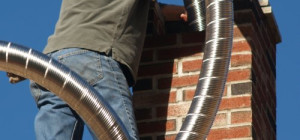 The world of commuting is experiencing a significant transformation owing to rapid technological advancements and shifting work trends. As a result, commuting patterns are evolving and reshaping how we travel. This blog explores ways commuting patterns are changing and their implications on our daily lives. So, read on to learn.
The world of commuting is experiencing a significant transformation owing to rapid technological advancements and shifting work trends. As a result, commuting patterns are evolving and reshaping how we travel. This blog explores ways commuting patterns are changing and their implications on our daily lives. So, read on to learn.
How Commuting Patterns are Evolving
Here are some ways commuting patterns are evolving:
1. Rise in Online Jobs
An increase in online jobs is significantly impacting commuting patterns. The availability of high-speed and online collaboration tools has allowed more companies to shift their work online. Thus, employees can work from home. This shift reduces traffic congestion and significantly decreases travel-related stress and expenses.
2. Electric Vehicles
The rise in popularity of electric vehicles is also reshaping commuting patterns. EVs are an eco-friendly option compared to traditional engine cars. The reason for this is they don’t emit pollutants.
Moreover, the development of EV charging stations have made EVs more appealing to commuters. EVs are becoming a viable option for daily travelling owing to their longer ranges and improved battery.
3. Shared Travel Solutions
The popularity of ride-sharing services has skyrocketed in recent years. These services help reduce the number of automobiles on the road by allowing users to share rides. Moreover, carpooling initiatives encourage travellers to share vehicles. Thus, further reducing traffic congestion and the environmental impact of travelling.
Additionally, bike-sharing programs are also available for environmentally conscious travel. They provide an affordable and eco-friendly alternative for short-distance commuting.
4. Micro-Mobility Revolution
The rise of micro-mobility options, like electric scooters and bikes, has transformed short-distance commuting. These compact vehicles provide an efficient means of travelling within cities. Moreover, they allow travellers to bypass traffic and reduce travel time.
5. Integration of Public Transportation
Commuting patterns are evolving through the integration of multiple transportation modes. Governments worldwide are investing in connecting different transportation modes like buses, trains, and metros.
Moreover, integrated ticketing systemsmake it easier for travelers to switch between various modes of transport. Moreover, it reduces the reliance on private vehicles. This integration encourages individuals to combine different modes of transportation while reducing the environmental impact of travel.
6. Healthy Commuting Options
Active commuting options such as walking or cyclingare gaining popularity as they are healthier and more sustainable travel options. There has also been a rise in bike lanes and walking zones to encourage active commuting.
These initiatives reduce traffic congestion and promote physical activity, leading to healthier individuals and communities. Travellers who choose active transportation also benefit from lower stress levels and improved health.
7. Flexible Work Shifts
In addition to remote jobs, businesses are shifting to flexible working hours. Many companies are allowing employees to choose their start and end times. Thus, enabling them to avoid peak rush hour traffic. Moreover, this flexibility in scheduling helps distribute the flow of travellers throughout the day. It also reduces congestion during traditional commuting hours.
8. Data-Driven Commuting Solutions
The availability of vast amounts of commuting data is driving the development of data-driven solutions. Commuting apps and platforms analyse data on traffic patterns to provide personalised commuting recommendations. These solutions help commuters make informed choices and optimise their routes.
9. Telecommuting Hubs
Telecommuting hubs or co-working spaces are emerging as an alternative to traditional office spaces. These hubs provide a work environment closer to where people live. Hence, eliminating the need for long-distance commutes. Employees can work in these shared spaces a few days a week to reduce travel time and costs.
10. Smart Traffic Management:
Advancements in traffic management systems are crucial in shaping commuting patterns. Smart traffic signal systems can improve traffic flow by modifying signal timing in response to current traffic circumstances.
Moreover, smart routing apps and navigation systems help drivers choose the fastest routes, avoiding traffic congestion and travel time.
11. Incentives for Commuters
Many governments are offering commuter benefits and incentives to encourage sustainable commuting. These include subsidies for public transportation passes and rewards programs for carpooling or active commuting. Such motivate commuters to choose greener and more efficient transportation options.
Final Word
Are you searching for a comfortable and reliable taxi in Southampton? Look no further than Go Comfort! Whether it’s a daily commute or a special occasion, our experienced drivers will ensure you reach on time. Book your ride today and experience the comfort of luxury travel.
About the Author
Susan David is a marketing manager with a keen internet in sustainable commuting. She believes that adopting healthy commuting habits is essential for a sustainable future. She is also associated with Go Comfort (https://www.gocomfort.co.uk/), a leading Southampton taxi service known for its commitment to traveller comfort and convenience.









